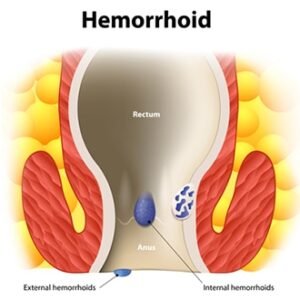Overview of Right Bundle Branch Block
Overview of Right Bundle Branch Block (RBBB)
Read Time: 9 minutes
Right Bundle Branch Block (RBBB) refers to a delay in the electrical signals on the right side of the heart, leading to irregular heartbeats, which are noticeable on an electrocardiogram (ECG). While RBBB itself is not typically a major issue, it can sometimes signal an undiagnosed heart condition. This condition usually causes no symptoms and may not require treatment unless it’s addressing an underlying cause. In this article, we’ll explore what RBBB is, its potential causes, and its significance for your health.
What Is Right Bundle Branch Block (RBBB)?
The heart consists of two bundle branches, one on each side. These branches are responsible for conducting electrical impulses throughout the right and left ventricles, ensuring that both sides of the heart contract in sync. The electrical signal begins at the sinoatrial (SA) node, travels to the atrioventricular (AV) node, and then through the bundle branches to prompt the ventricles to contract.
When a bundle branch is blocked, the electrical impulse encounters a delay, causing one side of the heart to contract slightly later than the other. This disruption in coordination can reduce the heart’s efficiency.
Is RBBB Serious?
Unlike left bundle branch block (LBBB), which can have significant implications for heart function, RBBB usually has minimal impact on overall cardiac performance. However, RBBB can serve as an important indicator of underlying heart disease, especially in individuals with a history of heart attack or heart failure. It is generally not severe on its own but may increase the risk of premature death in patients with existing heart conditions.
RBBB can be categorized into two types: incomplete and complete block. An incomplete block means that the electrical signals are only partially disrupted and generally don’t pose a risk, though they could progress to a complete block. A complete block represents a more significant disruption but usually does not result in severe complications. However, it may contribute to symptoms of heart failure and increase the risk of mortality from cardiovascular conditions.
Causes of Right Bundle Branch Block
RBBB occurs when there is damage or stretching to the right ventricle, which may be due to various heart and lung conditions. The likelihood of developing RBBB increases with age, affecting individuals over 65 at double the rate of those under 40. It is also more common in men.
Common conditions that affect the right ventricle or increase its strain include:
-
Atrial septal defect (a hole in the wall between the two upper chambers of the heart)
-
Coronary artery disease (reduced blood flow to the heart muscle)
-
Myocarditis (inflammation of the heart muscle)
-
Valvular heart disease (damage to one or more of the heart’s valves)
-
Ventricular septal defect (a hole in the wall between the ventricles)
Increased strain on the right ventricle can also be caused by conditions such as:
-
Pulmonary embolism (a blood clot in the lungs)
-
Pulmonary hypertension (high blood pressure in the lungs)
Other lung disorders that contribute to increased strain on the right ventricle include chronic obstructive pulmonary disease (COPD) and obstructive sleep apnea.
Does RBBB Cause Symptoms?
RBBB rarely causes noticeable symptoms. However, in some individuals, it may exacerbate symptoms of heart failure. People with existing heart disease or other complications may experience worsening symptoms related to their heart condition. RBBB is often detected incidentally during an ECG, where it appears as a widening of the QRS complex due to the delayed electrical impulse traveling through the ventricles.
In some cases, RBBB may be associated with Brugada syndrome, a rare but potentially life-threatening heart rhythm disorder, especially if there is an elevation in the ST segments on an ECG.
Diagnosis of RBBB
RBBB is often discovered during an ECG, which provides a clear visual of the heart’s electrical activity. The widening of the QRS complex, particularly in leads V1 and V2, is characteristic of RBBB. For individuals with additional symptoms such as unexplained syncope (fainting), further tests may be conducted to rule out other heart or lung diseases. A chest X-ray and echocardiogram are typically used to assess the heart and lung conditions that may be contributing to RBBB.
How Is RBBB Treated?
Treatment for RBBB is usually unnecessary unless there is an underlying heart condition that needs to be addressed. Common treatments for heart disease include:
-
Reducing salt intake
-
Following a heart-healthy diet
-
Engaging in regular physical activity
-
Maintaining a healthy weight
-
Quitting smoking
In some cases, a pacemaker may be required, especially if the bundle branches are significantly affected or if the individual has experienced a heart attack. Conditions such as dilated cardiomyopathy or unwell sinus syndrome may also increase the need for a pacemaker.
Does RBBB Affect Life Expectancy?
On its own, RBBB does not generally affect life expectancy unless it is caused by an underlying condition. If RBBB is due to a serious heart or lung disease, it may contribute to complications that affect long-term health.
Frequently Asked Questions:
-
What is Right Bundle Branch Block (RBBB)?
-
RBBB is a delay in the electrical signals on the right side of the heart, resulting in irregular heartbeats.
-
-
Is RBBB serious?
-
RBBB is usually not severe but may indicate an underlying heart condition.
-
-
Does RBBB cause symptoms?
-
RBBB rarely causes symptoms but may aggravate heart failure in some individuals.
-
-
How is RBBB treated?
-
RBBB typically requires no treatment on its own, but underlying heart conditions may need management.
-
By understanding the causes and potential impacts of RBBB, individuals can make informed decisions about their health and take appropriate measures to address any underlying heart conditions.



